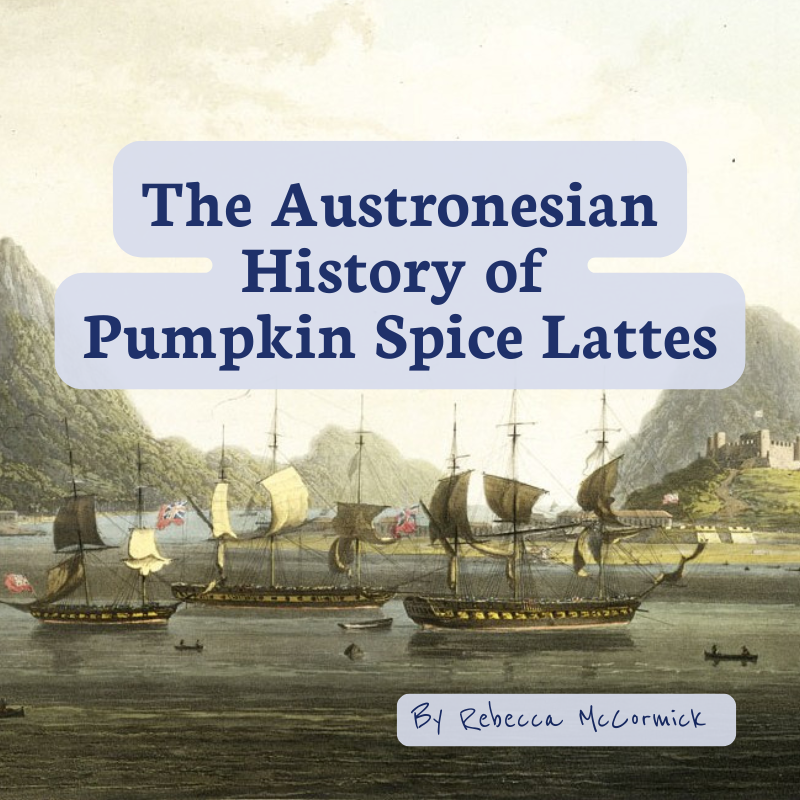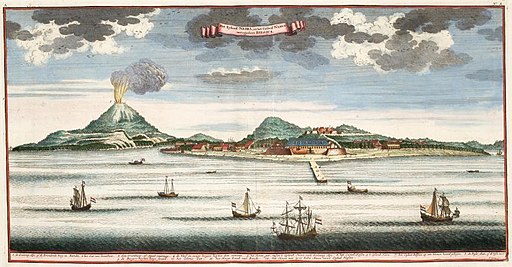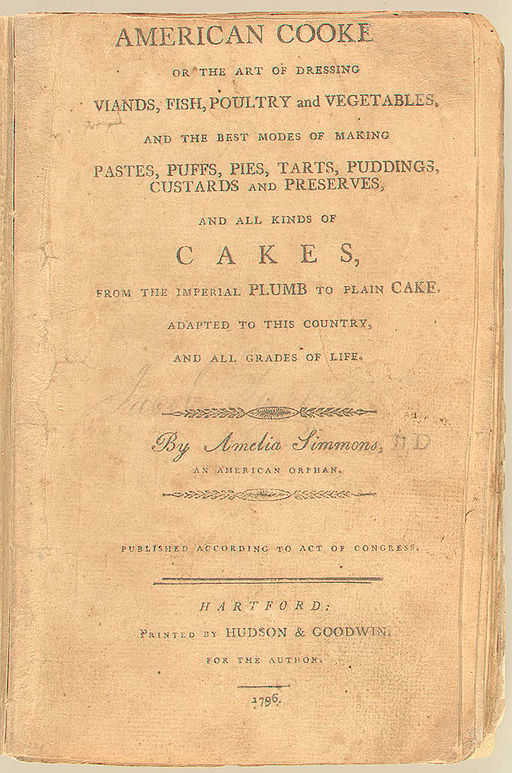
Do you like pumpkin spice lattes? Are you obsessed with PSL season? If so, you have the ancient Austronesian peoples to thank! Confused? Let’s walk you through the ancient, global history of the spices that go into your favorite fall treat.
What is pumpkin spice?
Pumpkin pie spice, also called pumpkin spice, has been marketed under that name since the 1930s when it was sold by the American spice company McCormick & Company. It includes cinnamon, nutmeg, cloves, ginger, and sometimes allspice. Despite its name, pumpkin spice has no pumpkin in it at all.
What came before pumpkin spice?
A similar spice combination has been used to flavor pumpkins since at least 1796 when the first American cookbook, American Cookery by Amelia Simmons, was published in post-colonial Connecticut. The custard-style pumpkin pie recipe included sugar, mace (which also comes from the nutmeg tree), nutmeg, and ginger.
Before that, there was a spice combination called poudre-douce, or sweet powder, used throughout medieval Europe. Unlike modern recipe books, older cookbooks didn’t necessarily list out commonly-known spice mixes, so they varied by region. Poudre-douce likely included some combination of grains of paradise, ginger, cinnamon, nutmeg, sugar, and galangal.
But where were all these spices coming from?
First, let’s look at cinnamon. There are different types of cinnamon that grow across Asia from India to Vietnam to China to the Philippines. It had been a prized spice since antiquity with references to it in Ancient Egyptian and Ancient Greek recipes. At that point, they would have been brought overland through early Spice Roads.


Next, we look at nutmeg. Both mace and nutmeg come from the tree indigenous to Indonesia. Nutmeg was an essential spice and part of the Austronesian maritime trade network. There was residue found on a potsherd from c.1500 BC/BCE on the island of Pulau Ai. From Indonesia, it would have been traded to India and then Constantinople in the West. While Arab traders knew the origin of nutmeg in the Banda Islands, they kept it secret for centuries. When the Dutch East India Company discovered the source in the sixteenth century, they waged a bloody war against the native population in order to create a monopoly on the prized spice.
What about cloves? Cloves are the aromatic buds of a tree native to the Indonesian Maluku Islands, also known as the Spice Islands. Similar to nutmeg, cloves were cultivated and traded widely by the Austronesian peoples. From there, they spread across the ancient world and were wildly popular well into modern history. There was intense competition between the European colonial powers in the region with the French stealing seedlings from the Dutch who attempted a complete monopoly on spices from the region.
Now for ginger! Ginger was domesticated by the Polynesian peoples of Maritime Southeast Asia roughly 5,000 years ago. Again known throughout the ancient world and prized as a medicine in Ancient China, ginger was taken by canoe on various voyages across the region spreading from Sri Lanka to Madagascar to Hawaii by ancient navigators. (Try candied ginger in Ming Dynasty Unboxed.)
Our last ingredient, allspice, brings us back to the Americas. Native to Jamaica, the dried berry combined the flavors of cinnamon, nutmeg, and clove into one potent spice. Europeans became aware of the flavorful berries during the second voyage of Christopher Colombus.
From Revolutionary America to India to Indonesia to Jamaica, pumpkin spice is a truly international spice combination. The next time you drink a pumpkin spice latte, think of all the Indigenous cultivation behind each of those unique flavors!
Want to learn more culinary history? Check out Ancient Eats: An Edible Exploration of the World.

